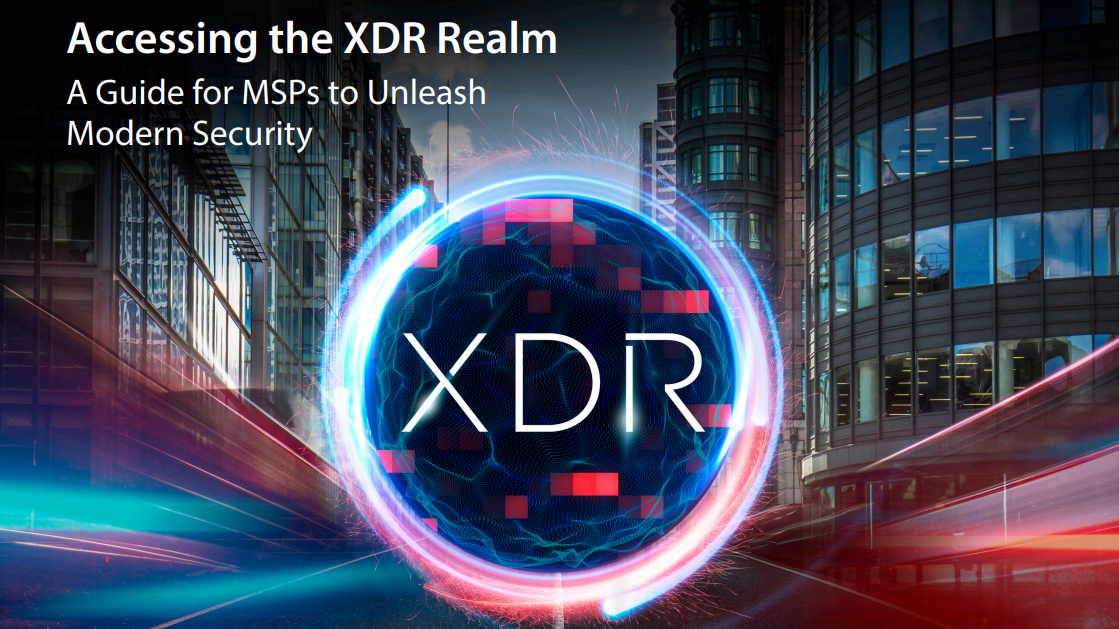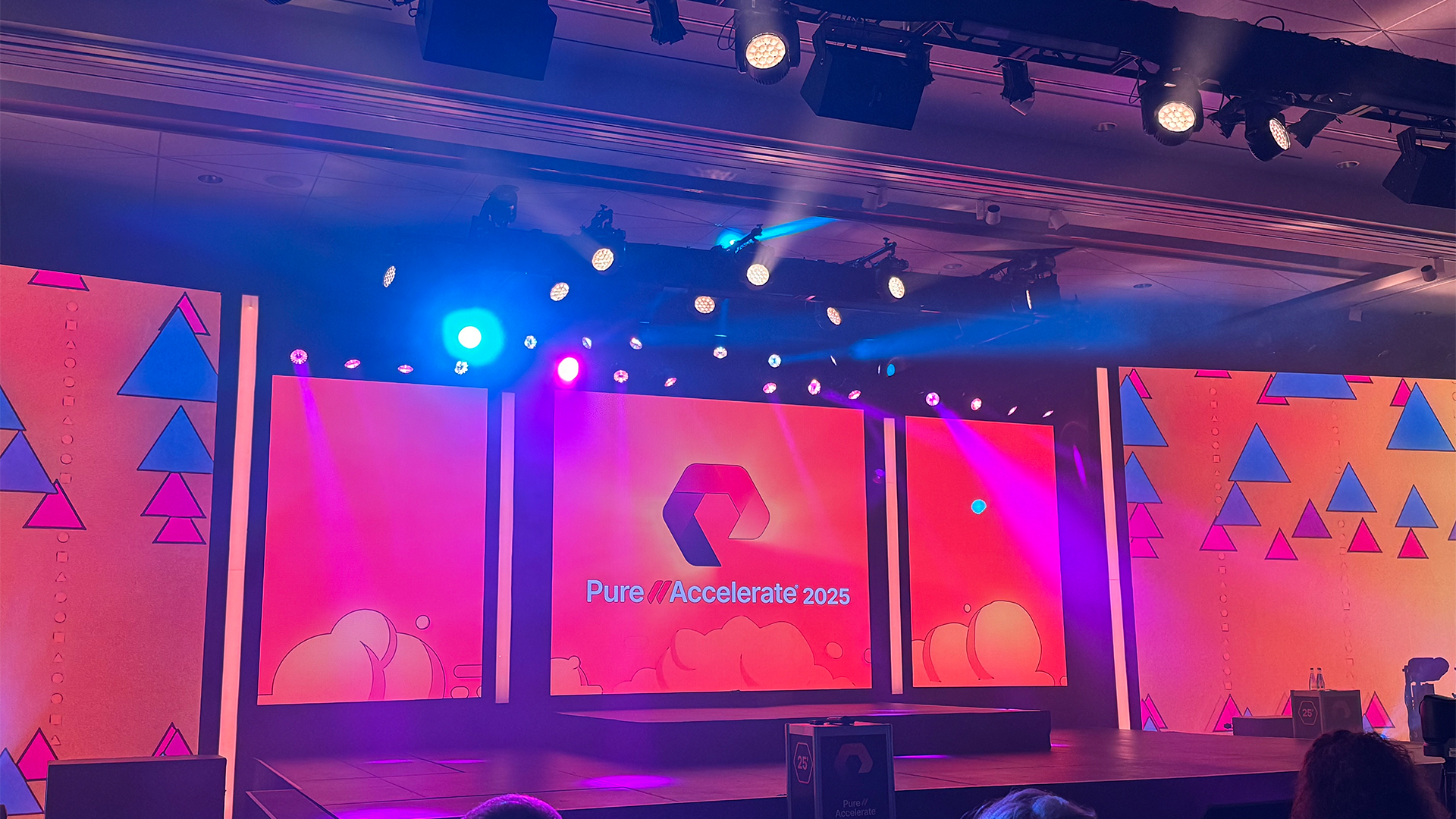Storage as a service: A win-win for the channel and modern businesses
Storage as a service has become a key focus for businesses seeking to consolidate their post-pandemic IT spending


In the wake of the pandemic, it was crucial for IT departments to ramp up their technological capabilities to support increased digitization efforts.
Overnight, businesses were dealing with challenges such as implementing contactless payments, teleconferencing, telemedicine, and e-commerce.
Unfortunately, this acceleration meant some businesses did not factor in tech debt, which refers to the off-balance-sheet accumulation of all the tech work companies are required to do in the future.

Geoff boasts more than 25 years of extensive IT industry experience. Most recently, he spent 18 years at Veritas and worked in several roles in sales and channel leadership. Throughout his career, Geoff has established strong relationships with partners and distributors all across the EMEA region.
As a result, today’s digital transformation investments are being threatened by this tech debt. To compound this challenge, pressing ahead with digital transformation initiatives on top of a foundation of legacy IT architecture risks creating an expensive and difficult-to-maintain infrastructure, which is also impacting organizational performance and increasing cyber risk. It has become a vicious cycle.
RELATED RESOURCE

The channel is constantly evolving in step with the changing business landscape, and never more so than in the last couple of years. IT budgets have been cut across the board against a challenging macroeconomic environment, coupled with war and energy crises. The result is companies being stuck with underperforming, complex, and energy inefficient legacy solutions.
This has also meant there is less opportunity for the channel to help organizations with their digital transformation, as technology CapEx spends have been reigned in, impacting the channel’s bottom line.
Today, the channel is looking for ways to continue delivering the innovation that companies desperately need, with never before seen levels of flexibility and customization, all without large upfront costs.
Stay up to date with the latest Channel industry news and analysis with our twice-weekly newsletter
Enter Storage as a Service (STaaS)
STaaS is a service focused consumption model for storage procurement that allows organizations to provision the capacity and performance they need on-premises, in the cloud, or any other combination and pay for it on an as a service basis.
STaaS is a great option for enterprises that need infrastructure to accommodate different workloads for short and longer-term projects without operational or cost penalties, so long as effective SLAs are put into place.
It removes much of the complexity and risk associated with data storage and reduces friction, costs and complications associated with sharing data across the enterprise.
Crucially, STaaS doesn’t require the same substantial CapEx outlay of traditional IT infrastructure.
A win-win for the channel and businesses
The storage as a service market was valued at $17.30 billion in 2020 and, according to research firm ATR, is expected to grow 16.1% by 2027 to $49.54 billion.
For partners, this development offers a promising outlook. STaaS provides a means for the partner community to offer modern, energy efficient solutions to meet customer aspirations and challenges.
They can serve a wider range of customers, both those who buy hardware through a CapEx model, those looking for more flexibility through as a service and also a middle option where customers want to own the hardware but not manage the solution.
Ultimately, it's about being able to provide customer choice and meet their needs.
Without the ability to offer this, partners might see themselves sidelined in favor of hyperscalers which offer convenient, though often not ideal solutions, to channel partners’ customer bases.
The reason why STaaS is resonating is because organizations can do more with less, when STaaS is delivered as a true service offering, allowing customers to streamline processes and operations traditionally managed internally back to the STaaS provider.
This benefit is over and above the ability to align spend with actual consumption and the significant economic benefit that delivers. Furthermore, STaaS can deliver the same cloud-like experience without necessarily requiring a commitment to public cloud.
This has created new opportunities for customers to realize the outcomes that are typically associated with the public cloud without the associated adoption challenges.
Hurdles for partners to avoid with STaaS
Not all STaaS offerings are created equal and partners need to look to offer a true value-added service, as some vendors simply offer OpEx billing disguised as a service. This would be more like a lease, where products are deployed on a multi-year cycle and upgraded at the end as part of forklift upgrades.
For channel partners to succeed they should offer solutions with guaranteed service levels and automated upgrades to meet performance and capacity guarantees at no additional cost. Partners should also check if the STaaS provider is able to provide file and block access storage as well as fast file and object storage on the same hardware.
Only then will all workloads be covered - from fast transactional block access to unstructured file data, to fast throughput for analytics and recovery. Monitoring software is another plus as it gives customers an overview of the capacity utilization and performance of the storage infrastructure on-premises and in the cloud.
Some partners that do not have a wealth of experience selling as-a-service solutions may see challenges in shifting from a CapEx orientation to selling service subscriptions.
Such challenges might include a lengthier revenue collection timeframe, adapting quoting/invoicing systems/processes to subscription-oriented transactions, and adjusting the compensation models of their internal sales teams.
Partners also face the challenge of ensuring internal sales teams are trained to sell as a service/subscription/consumption-oriented solutions, a skillset that can be different from selling hardware or software-oriented maintenance packages.
Partners that want to participate in the growing as a service market should establish a formal transformation program to analyze and adopt the changes needed to internal skills, processes and technology.
STaaS driving the channel’s bottom line
With those challenges come new opportunities, however. As a service sales present a unique moment for partners to add value to offerings by bundling in additional services, reducing investment needed by the customer in the areas of IT admin and maintenance.
Even partners that do not have aspirations to ‘layer in’ a higher-level service wrapper will find that STaaS sales will drive more frequent contact with the customer and greater insight into customer challenges and opportunities to address them. The as a service model generates much higher frequency contact with the customer than would a traditional CapEx transaction.
The best technology vendors out there are offering training and enablement activities for pre-sales and service delivery teams on how to position and then deliver STaaS, to consultation on how partner organizations can smoothly transform themselves from traditional product-oriented organizations to service-oriented.
This partnership will make a real difference to the channel’s bottom line this year and beyond.

Geoff comes to Pure with more than 25 years of extensive IT industry experience. Most recently, he spent 18 years at Veritas and worked in several roles in sales and channel leadership. Throughout his career, Geoff has established strong relationships with partners and distributors all across the EMEA region. His decision to move to Pure was driven by a desire to work with a market disruptor that is growing and bringing exciting solutions to partners and customers around the world. His passion is building very strong teams, people development, and cross-functional collaboration.
-
 Licensed mmWave: Opportunity or overhead?
Licensed mmWave: Opportunity or overhead?Industry Insights Ofcom’s latest mmWave auction unlocks major new capacity for 5G and FWA, offering a faster, more flexible complement to fiber - especially in dense urban areas
-
 UK channel firms are ‘leading the way’ in AI networking readiness
UK channel firms are ‘leading the way’ in AI networking readinessNews Westcon-Comstor's latest research reveals that 43% of UK partners now offer AI-integrated network services as fresh opportunities beckon
-
 Cisco wants to take AI closer to the edge
Cisco wants to take AI closer to the edgeNews The new “integrated computing platform” from Cisco aims to support AI workloads at the edge
-
 ePrivate 5G and partner ecosystems: The blueprint for intelligent infrastructure
ePrivate 5G and partner ecosystems: The blueprint for intelligent infrastructureIndustry Insights Private 5G networks and collaboration between technology partners underpin the next wave of innovation and enterprise digital transformation
-
 Enterprise networking - but without the therapy bills
Enterprise networking - but without the therapy billsIndustry insights Historically the networking channel has been on focused on features, but we now need to shift emphasis to enablement...
-
 Pure Storage pulls no punches with competitors amid Enterprise Data Cloud launch
Pure Storage pulls no punches with competitors amid Enterprise Data Cloud launchNews The new data cloud is evolutionary, not revolutionary, but Pure thinks it's still the best option on the market
-
 Infrastructure modernization has come on leaps and bounds, but there’s still a long way to go
Infrastructure modernization has come on leaps and bounds, but there’s still a long way to goNews Enterprises have work to do, but some progress is better than none
-
 'Our partners asked, and we listened': Cato Networks unveils revamped global partner program
'Our partners asked, and we listened': Cato Networks unveils revamped global partner programNews The new initiative introduces specialization tracks and partner tiers with zero upfront financial commitment

